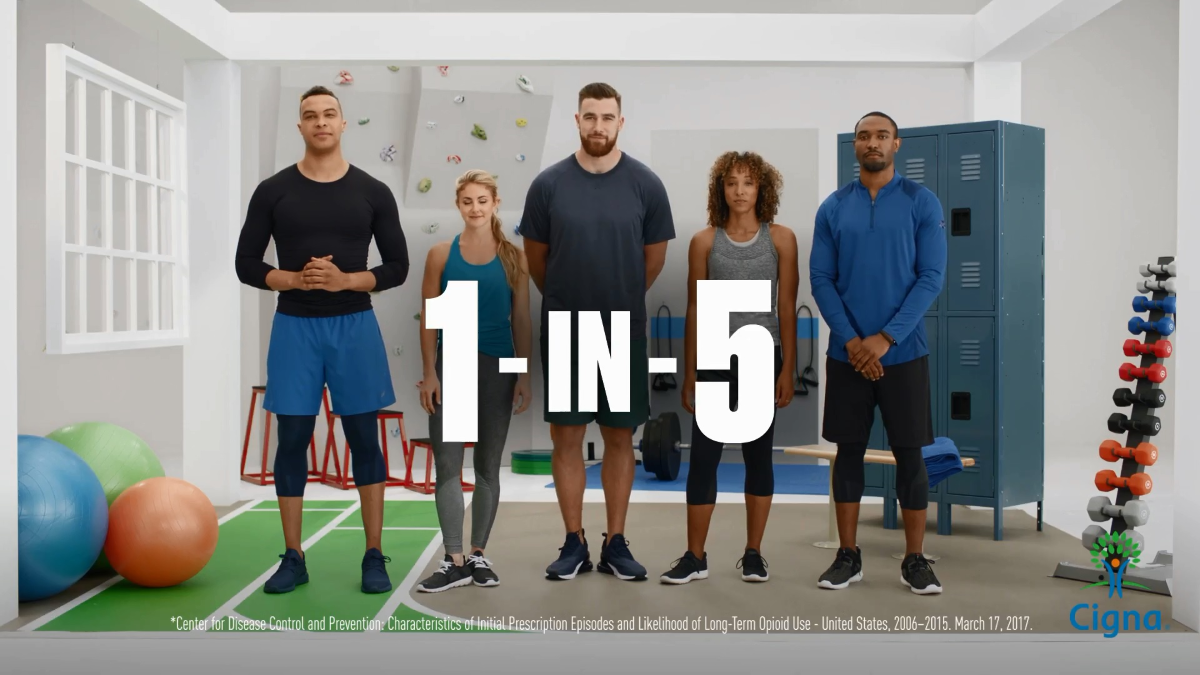
Most people simply accept the medicine their doctor prescribes. Antibiotics for a sinus infection? Sure. Insulin for diabetes? Great idea. But opioids for pain? Maybe not.
Cigna is urging patients to take a more active role before getting an opioid prescription. To ease the conversation about opioids between patients and doctors, the health insurer has launched a consumer-focused initiative to help curb the opioid epidemic.
Cigna has been working to tackle the opioid epidemic for more than a year. The insurer launched a program to educate doctors about when to prescribe opioids with the goal of reducing opioid use among its customers by 25% by 2019.
However, that program met its goal early, so Cigna’s marketing team started looking for other ways to combat opioids.
“It’s great that we accomplished the goal early, but that entire program was ‘how do we reduce prescriptions and help by working together with providers,’” said Stephen Cassell, VP of global branding at Cigna. “We had to think of a way into the mindspace of a consumer. In this case, we want to make you aware of the ways you can take control of your pain and put together a plan that helps you manage pain.”
The campaign, which was developed with McCann, OMD, and Edelman, is using a Centers for Disease Control and Prevention statistic that one in five people have an increased risk of opioid addiction get patients’ attention.
“We realized we’re speaking about prevention and yet we’re talking to people about opioids who have already gotten the prescription,” Cassell said. “There’s this very powerful statistic that 1 in 5 can get addicted, so can we somehow get the message out that there’s this potential here [to get addicted] and that you can understand more about opioids before you get to the prescription page.”
The program has several prongs: a text message component that sends questions to ask a doctor, an opioid name search, social media influencers, and resources for doctors and employers about how to talk about opioids.
The ultimate goal is to give people the information they need to have better conversations about pain and opioids.
Like the physician effort, this campaign wants to reduce the number of people on opioids, but Cassell stressed that sometimes opioids are necessary; that’s why the concept of a “pain plan” is central to the effort.
A pain plan can range from finding a support network to determining which painkiller would work best for the type of pain a patient is experiencing.
“There’s recognition that there are a lot of people who have real, debilitating pain and recognition that there are people with chronic pain conditions,” Cassell said. “The point of the pain plan is encourage conversation and the idea is to sit down with your physician and have basic questions to cover.”
Even a simple tool like a drug name lookup can help patients. The average person may know one or two opioids, like OxyContin or Vicodin, but painkillers come with many different brand and generic names.
“We were talking to consumers before we launched this campaign, and there’s this incredible awareness, because we see it all around us, that there’s an opioid epidemic,” Cassell said. “But most people don’t connect the dots that it can happen to them, too.”






